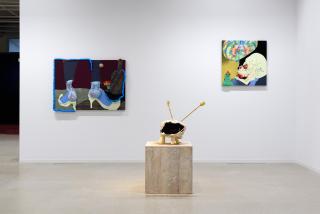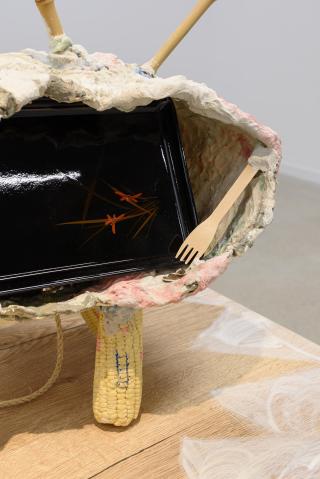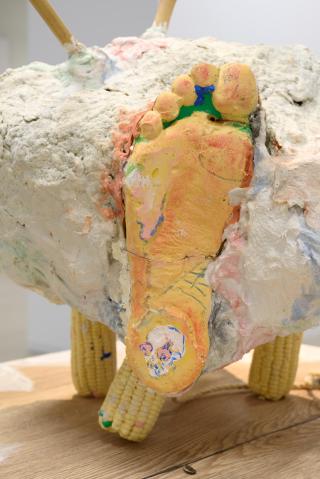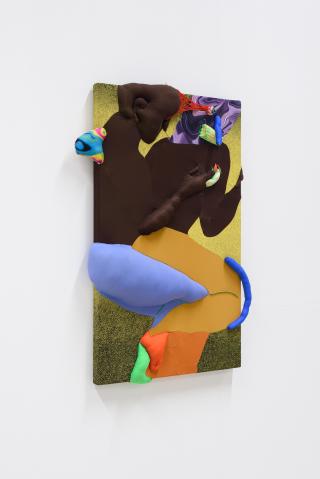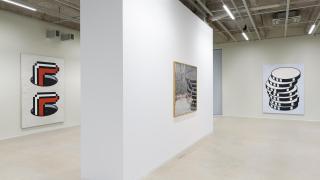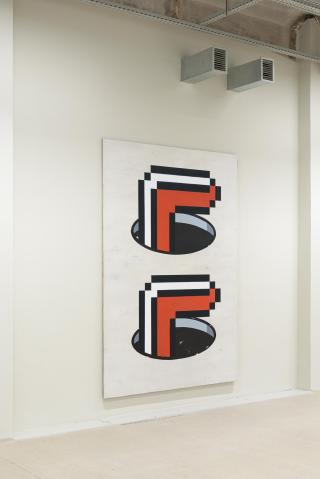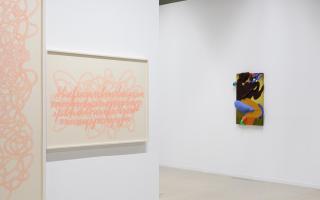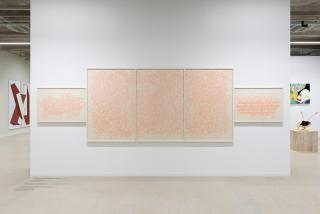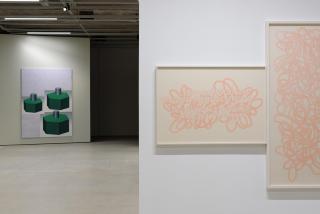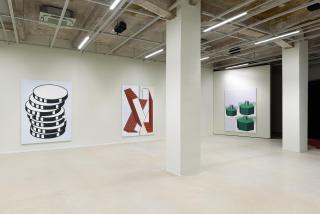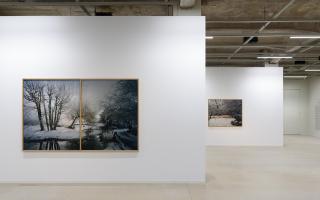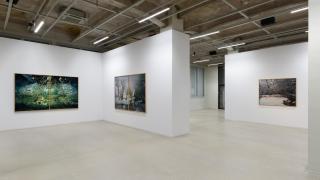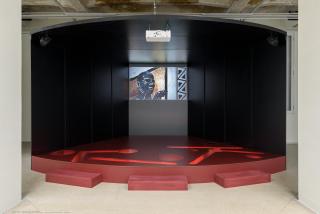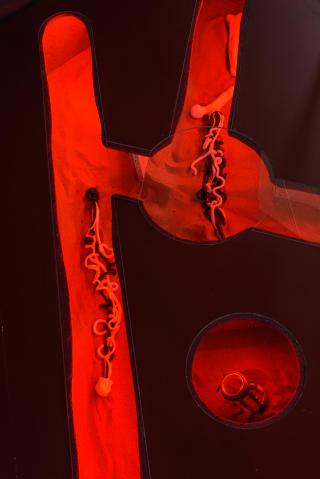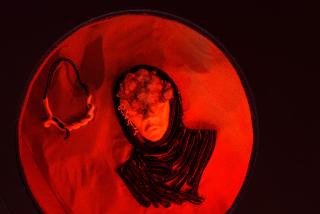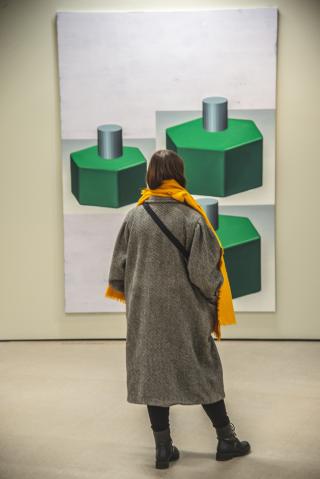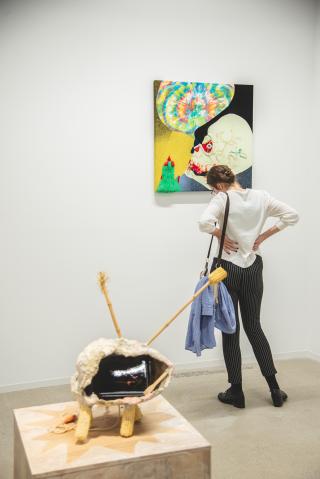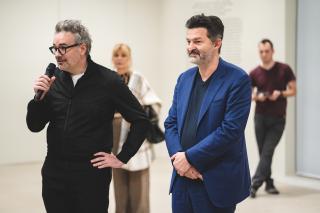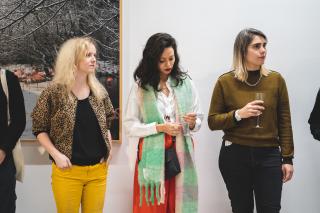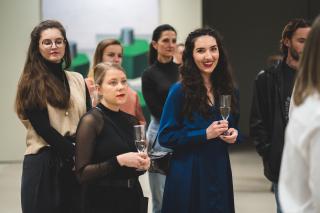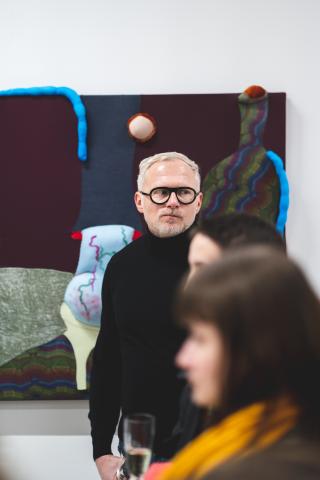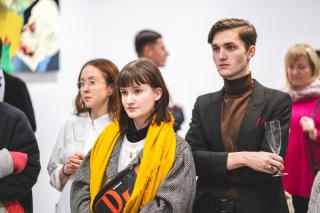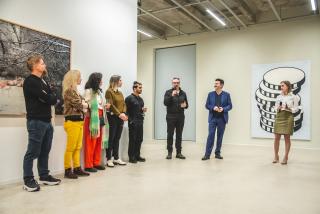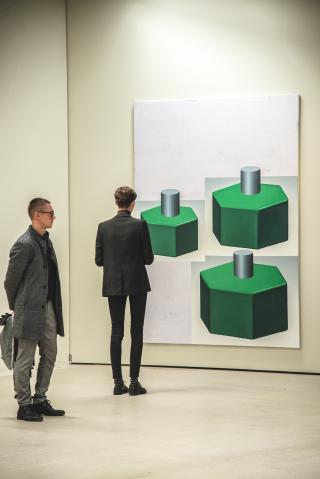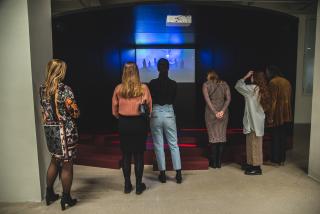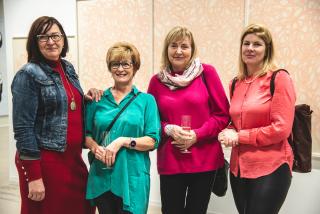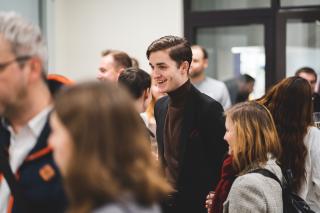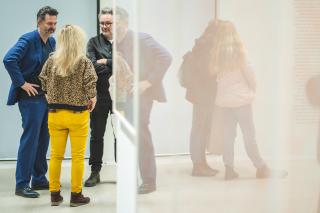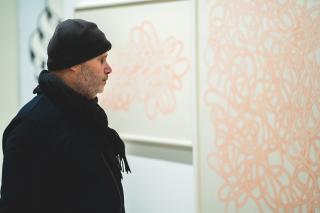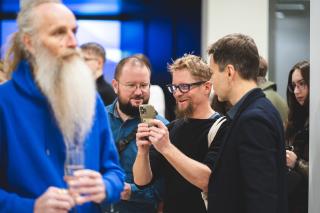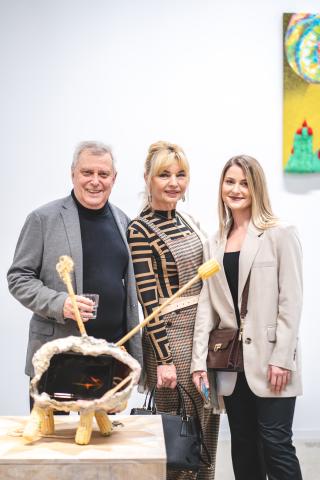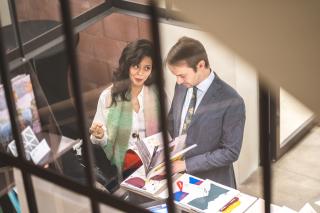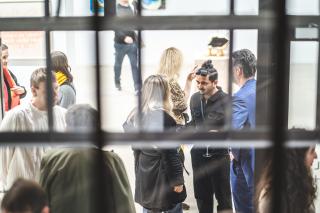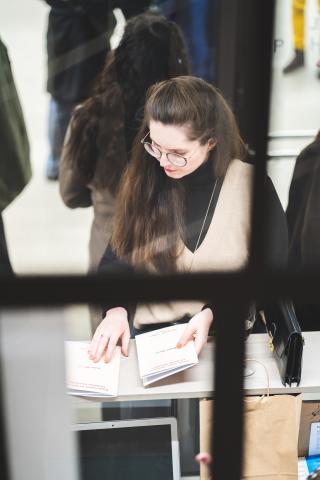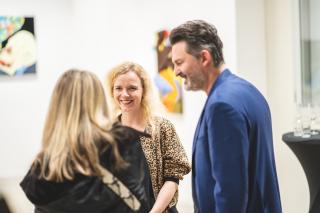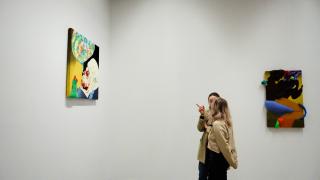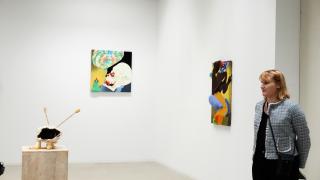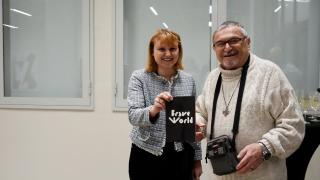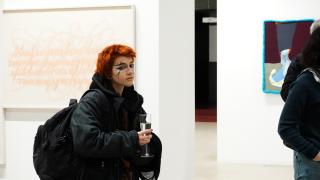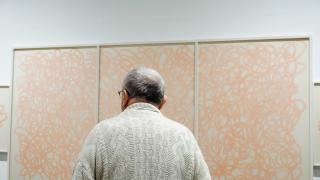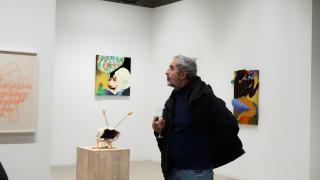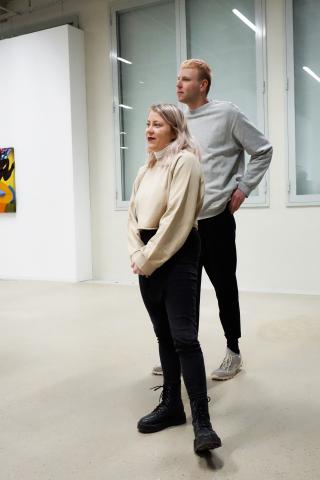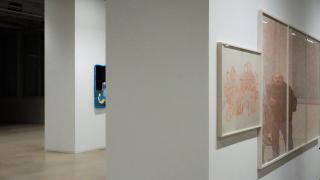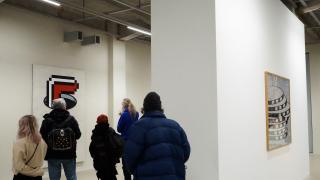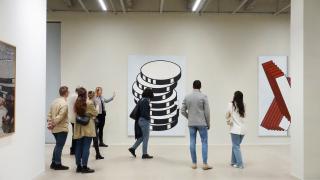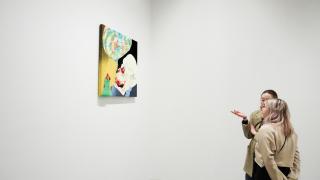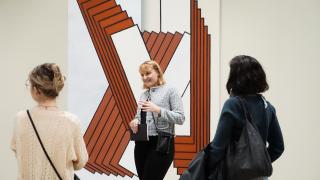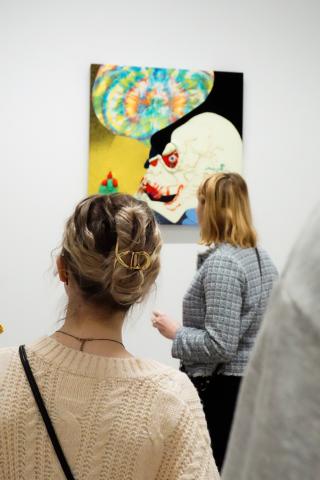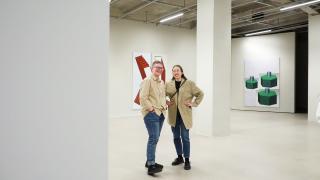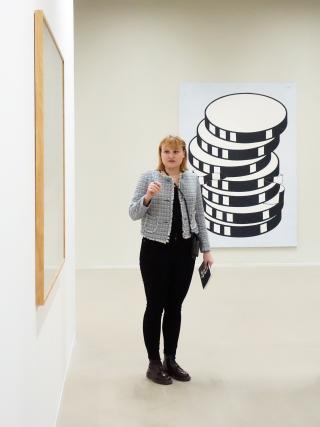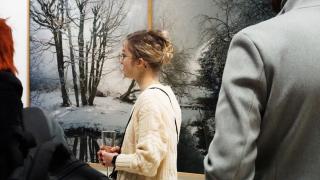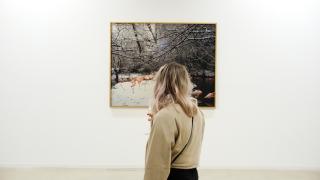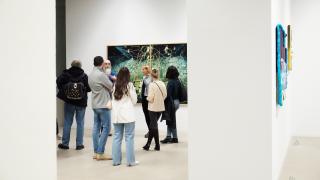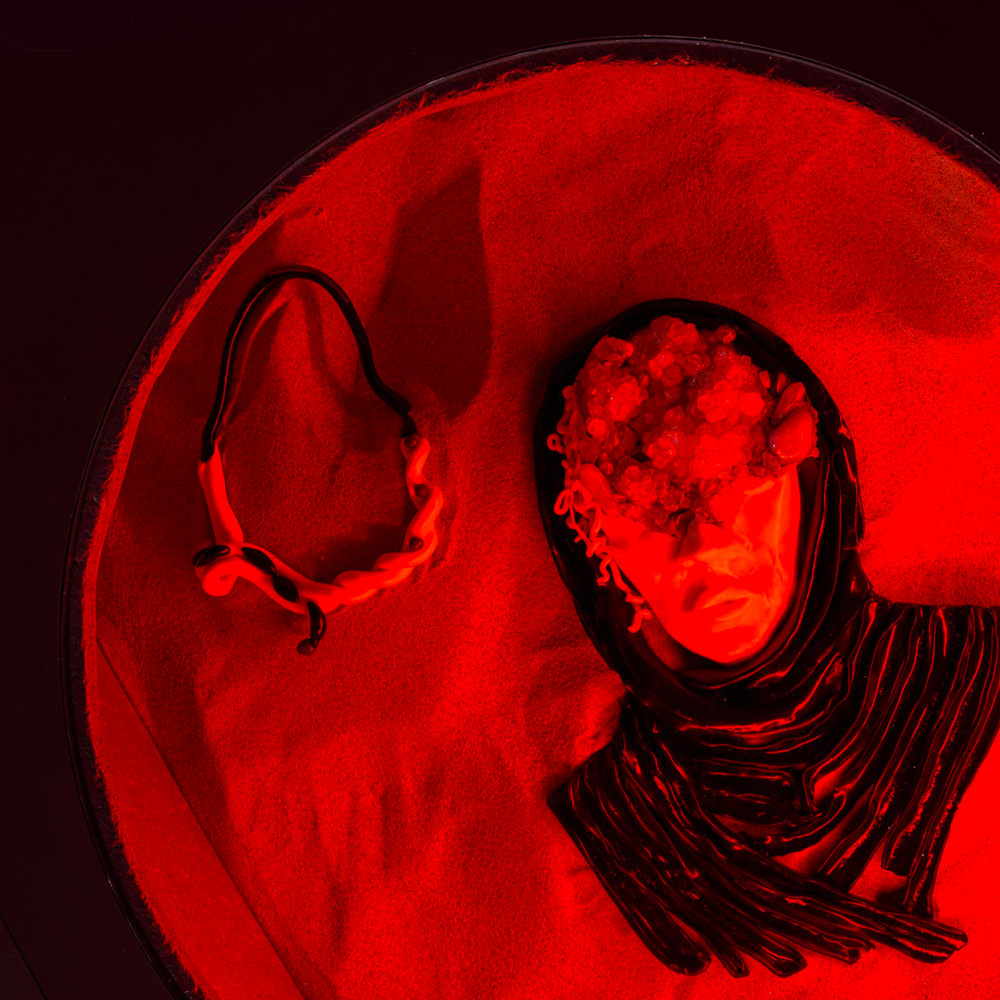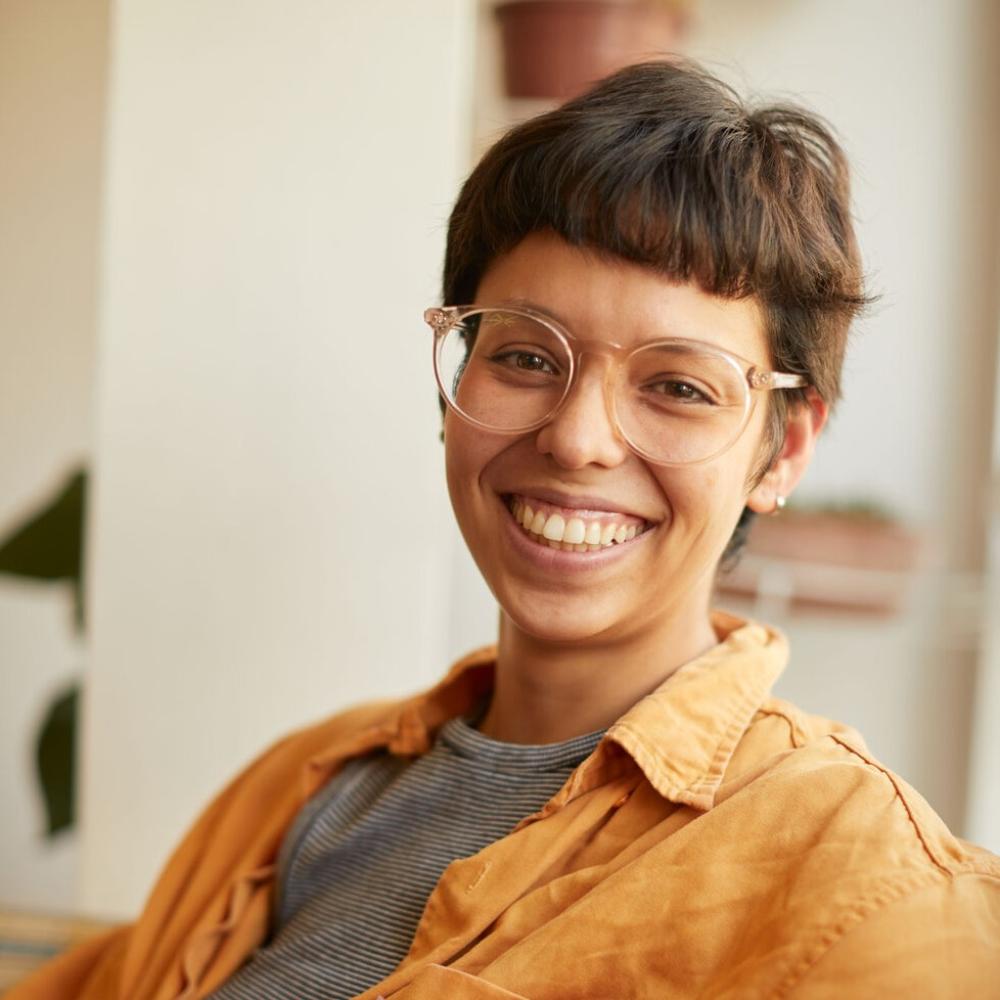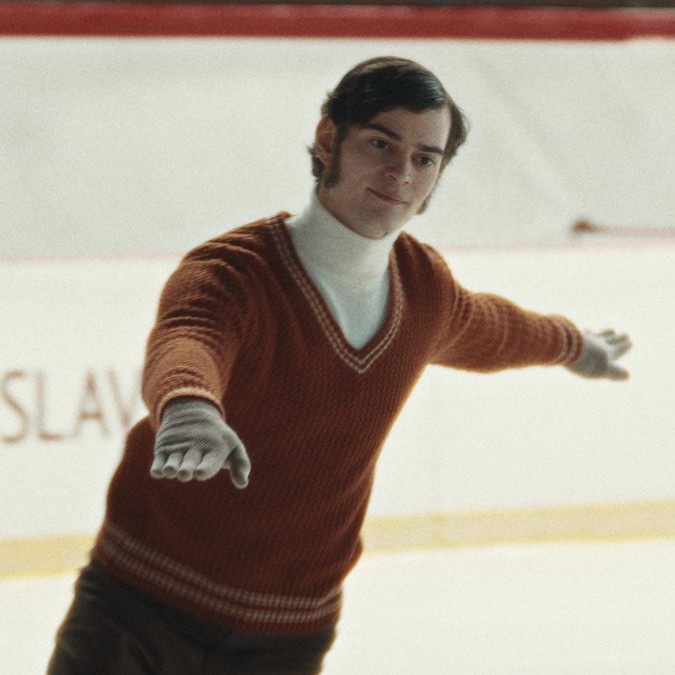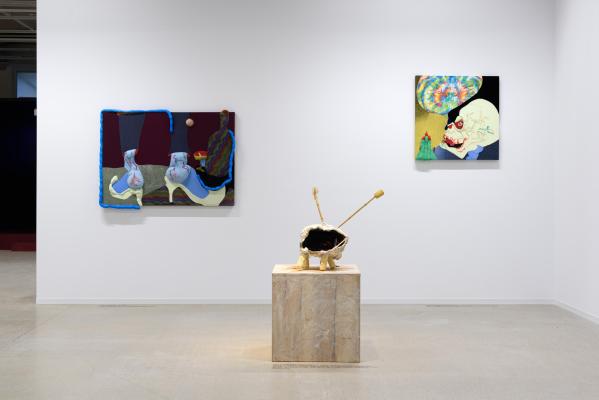
Long before we put our modernist paradigms of linear concepts of the world and its histories under question, humanity has ever since bridged between parallel worlds: either when it comes to encounters with different cultures or when religious beliefs have been trying to surpass the Hereafter and the here on earth. Visual culture hereby plays an intriguing role when it comes to depicting these parallel worlds. In our Western cultures, the term Mimesis accompanies us for centuries, as it is the act of representing or imitating reality in Art. This artistic act becomes even more complex when we enter the digital worlds and its visuals. Primož Bizjak's photographs depict landscapes and cities in large formats, but actually reveal several layers behind the depicted nature and architecture, as if the process of photography becomes a "painting" with meanings beyond the recognizable. Robert Gabris’s drawings seem to follow the rules of proportion and perspective, masterly executed, though Gabris leads us with historically common mimetic means of art into a surprisingly seductive world between friction, fantasies and desire. Avatars in Markéta Magidová’s animated films populate a world where digital figures encounter sculptures and other art pieces known from analogue surroundings, while providing critical comment on given societies. Depicted objects and motives taken from sources on the internet are often structural fragments of Anne Neukamp’s paintings, where she plays in painterly manner with the closeness and the distance towards seemingly recognizable everyday objects. A counter part of the idea of a regulated “brave new world” are the erotically loaded sculptures, paintings, and reliefs by Yuli Yamagata. Her work brings us once more beyond the rational towards the world of fantasy and desire. What connects all five artists and their work are their poetics of desire to grasp moments, which might allow to live in parallel worlds with less friction.
Concept of exhibition by Gregor Podnar
Curated by Tevž Logar
Supporting programme:

